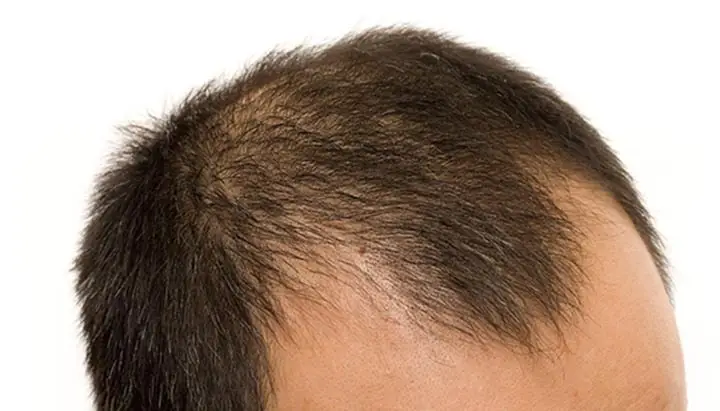Hair loss is a common issue that affects millions of people worldwide, impacting both men and women. With advancements in hair restoration technology, individuals now have a range of options to restore their hair and boost their confidence.
However, navigating the different hair replacement methods can be overwhelming. This guide provides an in-depth look at various hair restoration techniques, how to choose the best method for your needs, and what to expect from the process.
And, of course, our experts here at Morph Wellness MD are always available to answer any more questions that you may have on hair restoration or any other health concerns.
Understanding Hair Loss and Restoration
Hair loss can happen for a variety of reasons, including genetics, hormonal imbalances, medical conditions, and lifestyle factors. For many people, hair thinning or balding can lead to a loss of self-esteem and confidence.
Fortunately, hair restoration offers a solution that can help people regain their hair and feel like themselves again.
Common Causes of Hair Loss
- Genetics: Hereditary hair loss, known as male or female pattern baldness, is the most common cause of hair thinning and balding.
- Hormonal changes: Conditions like pregnancy, menopause, and thyroid imbalances can lead to hair loss.
- Medical conditions: Autoimmune diseases, scalp infections, and certain medications can contribute to hair loss.
- Lifestyle factors: Stress, poor diet, and lack of proper hair care can accelerate hair loss.
Hair Restoration: An Overview
Hair restoration refers to a variety of procedures designed to permanently restore hair in areas where it has been lost. These procedures can range from non-surgical options to more advanced surgical techniques, with many offering long-lasting and natural-looking results.
Hair restoration can help individuals regain a full head of hair and, with it, their confidence. Advancements in hair restoration techniques now enable natural hair growth, providing more natural-looking outcomes and improved patient satisfaction.

Hair Restoration Techniques
There are numerous methods of hair restoration, but it’s important to choose the right one based on the extent of hair loss and individual goals. These techniques can specifically help individuals dealing with thinning hair by restoring hair density and confidence.
Specialty shampoos, supplements, and over-the-counter products may provide minimal results, but those experiencing substantial hair loss often require more advanced treatments.
Medications for Hair Loss
For those in the early stages of hair thinning, medications like minoxidil (Rogaine) and finasteride (Propecia) can help. These treatments are designed to slow or even reverse hair loss by stimulating hair growth in surrounding follicles.
While medications are more effective for those with mild hair loss, they may not be as effective for individuals with advanced balding.
Platelet-Rich Plasma (PRP) Therapy
PRP therapy is a non-surgical treatment that has gained popularity in recent years. It involves drawing the patient’s blood, processing it to concentrate the platelets, and injecting the platelet-rich plasma back into the scalp.
The regenerative properties of PRP can help repair damaged hair follicles, stimulate hair growth, and improve hair density. While PRP is a newer option, studies suggest it can be an effective treatment for hair loss when used in conjunction with other therapies.
Hair Transplantation Methods
Hair replacement surgery is the most proven and permanent solution for individuals experiencing significant hair loss. The two main types of hair transplant methods are Follicular Unit Transplantation (FUT) and Follicular Unit Extraction (FUE). Each method has its benefits and considerations.
Follicular Unit Transplantation (FUT)
FUT is a traditional hair transplant technique where a strip of skin with hair follicles is removed from the donor area (usually the back or sides of the head), and the follicles are transplanted into the balding areas.
While this method leaves a linear scar at the donor site, it allows for the transplantation of a large number of hair grafts in a single session, making it ideal for those with extensive hair loss.
Follicular Unit Extraction (FUE)
FUE is a more modern technique that involves harvesting individual hair follicles directly from the donor area and transplanting them into the balding spots.
Unlike FUT, FUE does not leave a large scar, making it a more attractive option for those who prefer less visible scarring. Additionally, the recovery time for FUE is shorter, and the results tend to look more natural.
Choosing the Right Hair Transplant Method
Choosing between FUT and FUE can be a difficult decision, but it ultimately comes down to personal preferences, the severity of hair loss, and the desired outcome.
Key Considerations
- Extent of Hair Loss: FUT may be more suitable for individuals with more extensive hair loss, as it allows for the transplantation of more follicles in a single session. FUE is ideal for those who want to avoid a visible scar or have less significant hair loss.
- Recovery Time: FUE generally has a faster recovery time and causes less discomfort compared to FUT. Patients undergoing FUT may experience a longer healing process due to the incision made during the procedure.
- Scarring: If you’re concerned about scarring, FUE is the better option. The tiny, round scars from FUE are almost invisible, while FUT leaves a linear scar at the donor site.
Consulting a Specialist
Before deciding on a hair transplant method, it’s essential to consult with a qualified hair transplant surgeon who specializes in hair restoration. That is where we can help you out!
Our experts at Morph Wellness MD can assess your individual hair loss pattern, the condition of your donor hair, and your goals to recommend the most appropriate procedure.

Hair Loss Prevention and Treatment
For those looking to prevent further hair loss, medications, low-level laser therapy, and lifestyle changes can play a significant role. While a hair transplant provides permanent results in the treated areas, continuing treatment for the surrounding hair is essential to prevent further thinning or balding.
Medications and Treatments
Using hair loss medications like finasteride or minoxidil can help slow or stop hair loss in other parts of the scalp. Additionally, treatments like PRP therapy can encourage hair growth and strengthen existing hair follicles.

The Benefits of Hair Restoration
Hair restoration offers more than just a fuller head of hair—it can also improve self-esteem, facial proportions, and overall confidence. A successful hair transplant can lead to a more youthful appearance and help individuals feel more secure about their looks.
Boosting Confidence
For many, hair restoration is not just about aesthetics but about reclaiming a sense of identity. Restoring hair can have a profound impact on mental well-being, boosting confidence and encouraging individuals to engage more fully in social and professional settings.
Frequently Asked Questions
What is the most effective hair replacement?
The most effective hair replacement method depends on individual needs, but surgical hair transplantation, particularly FUE, is considered the gold standard for permanent, natural-looking results.
Which method of hair transplant is best?
Both FUE and FUT have their benefits. FUE is often favored for its minimal scarring and faster recovery time, while FUT may be recommended for those with extensive hair loss who need a larger number of grafts.
Which is better, FUE or DHI?
DHI (Direct Hair Implantation) is a variation of FUE that uses a specialized tool for implanting hair follicles. Both methods are effective, but DHI offers more precision in the placement of follicles. Your physician can help determine which method is best for your case.
What is the best hair regrowth method?
For individuals looking for regrowth without surgery, treatments like minoxidil, finasteride, and PRP therapy are effective for promoting hair growth in thinning areas.
Finding the Best Hair Replacement Method for Your Needs Conclusion
Hair restoration offers a variety of solutions for individuals looking to combat hair loss and regain a fuller head of hair. Whether through medications, PRP therapy, or surgical transplantation, there are options to suit every individual’s needs.
By consulting with a qualified physician and selecting the best treatment method, individuals can achieve natural-looking, long-lasting results and improve their overall sense of confidence and well-being.




